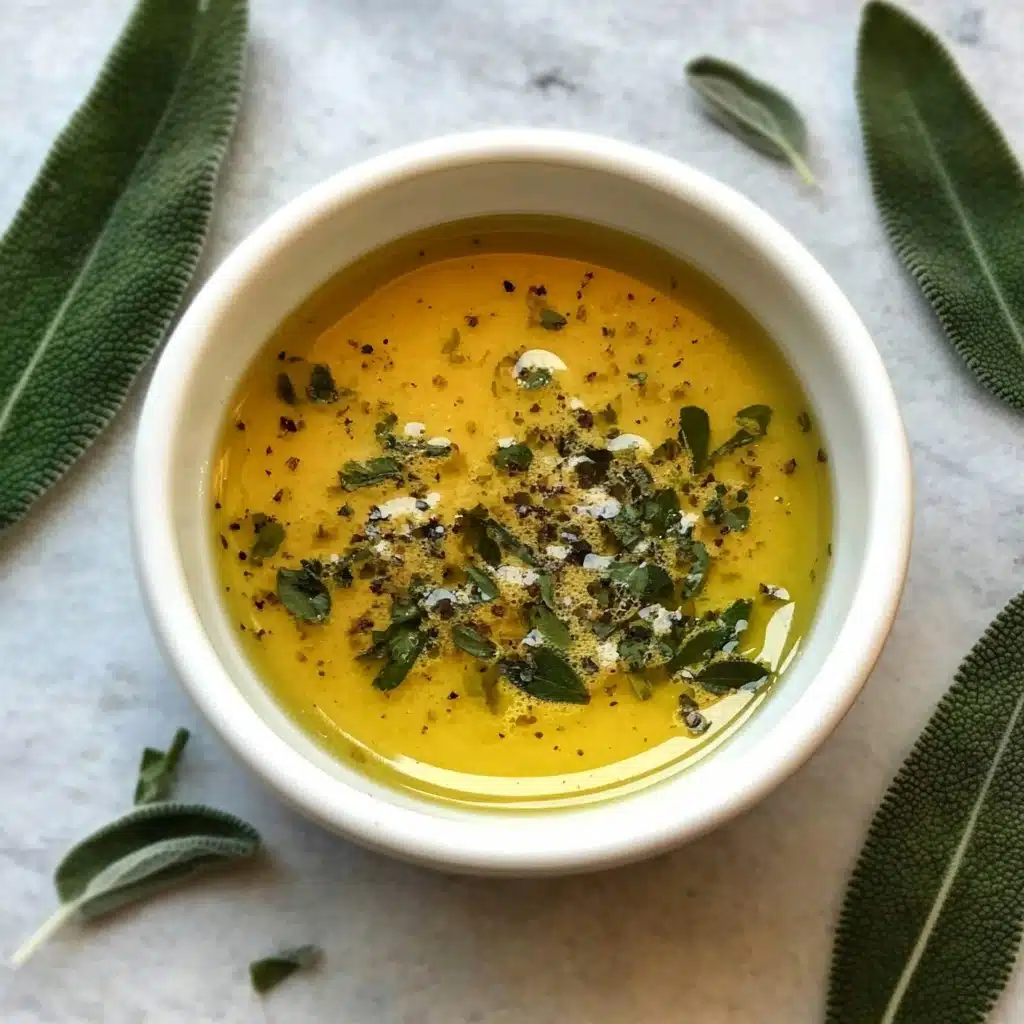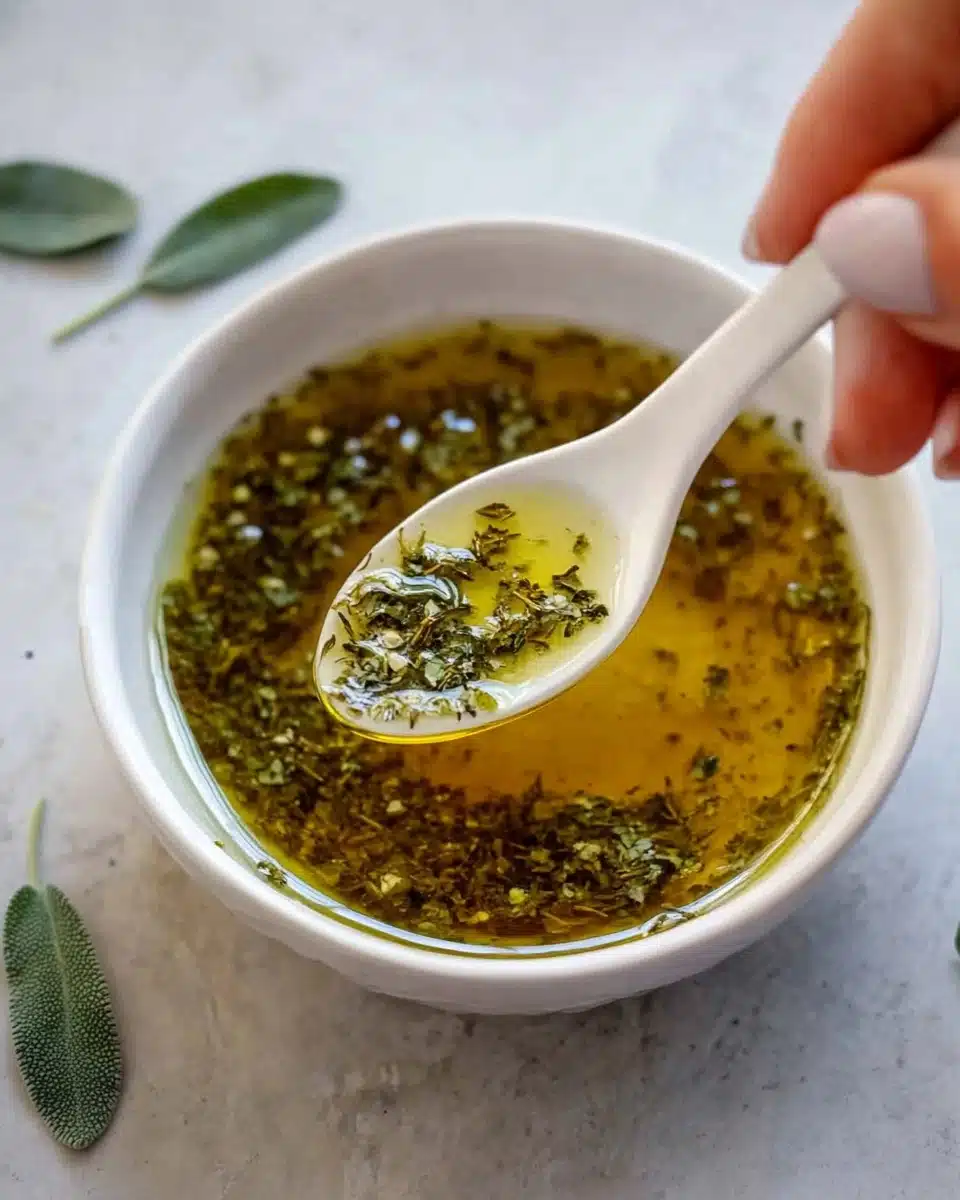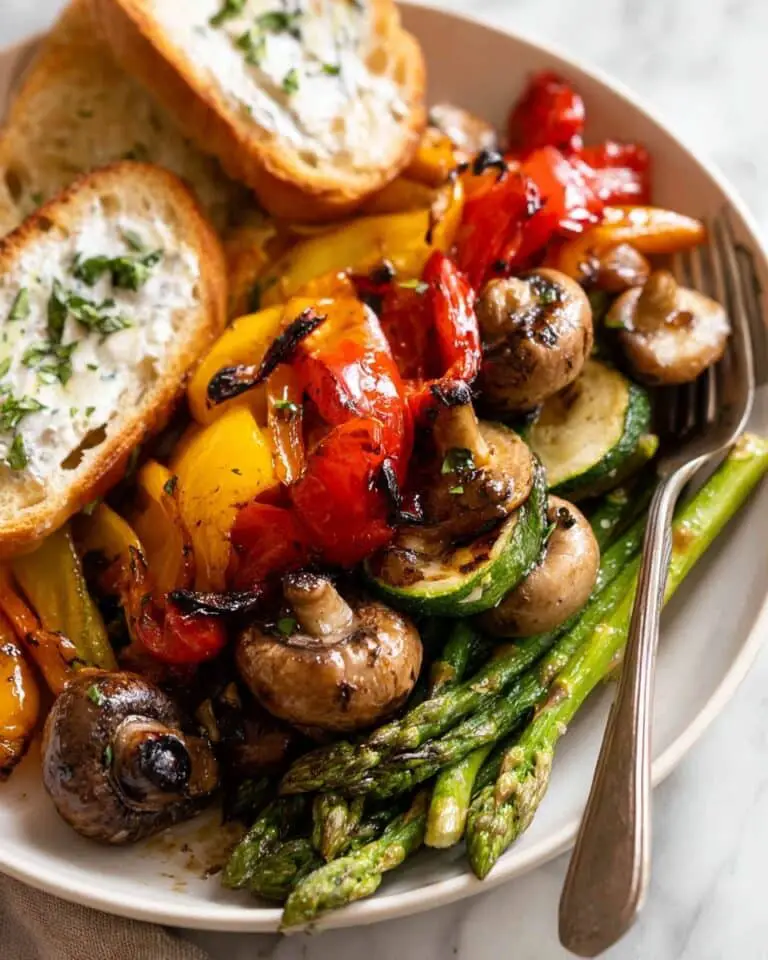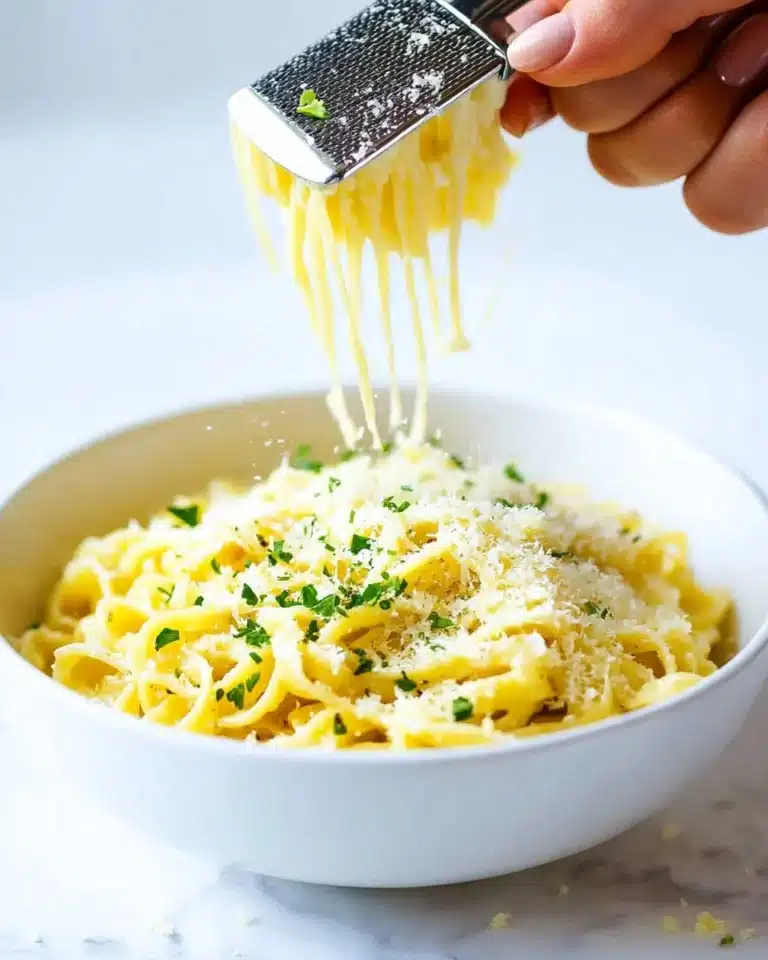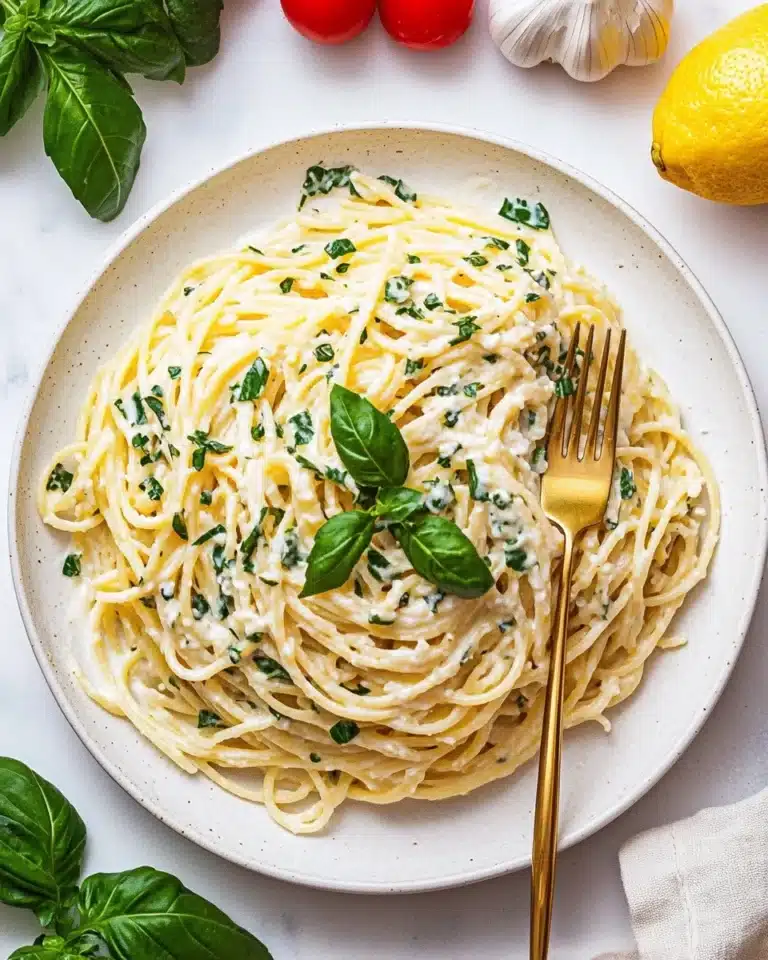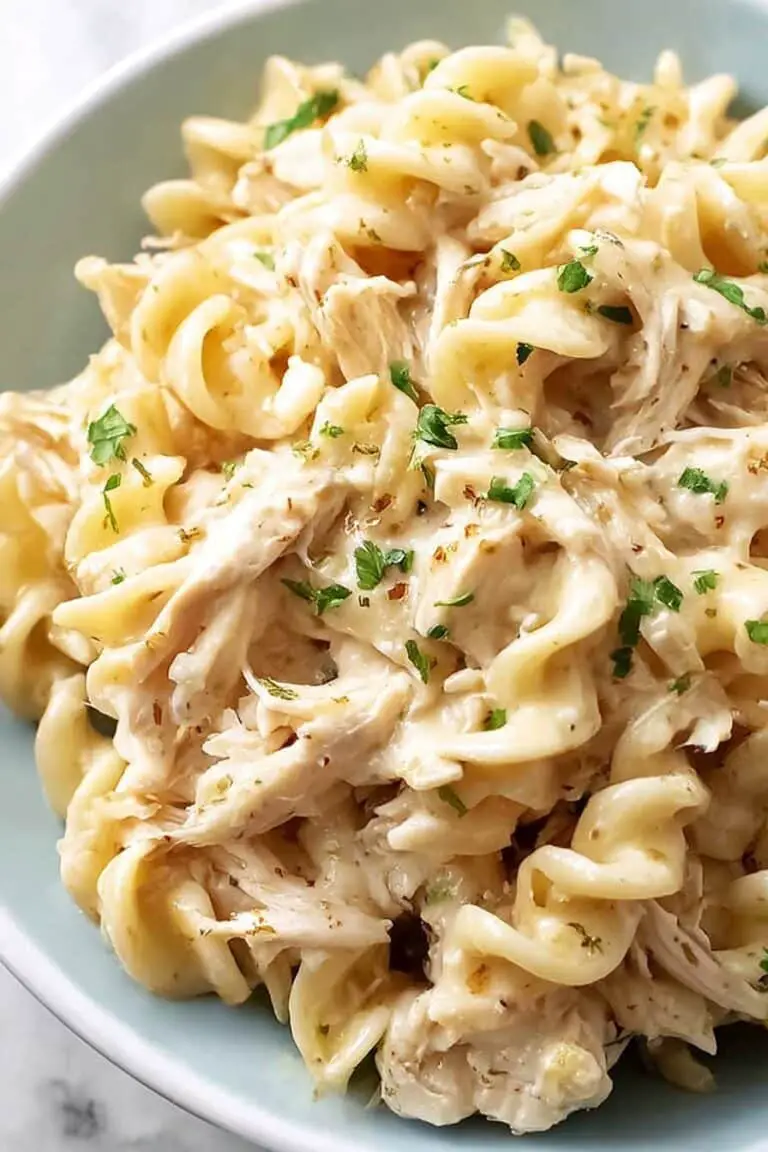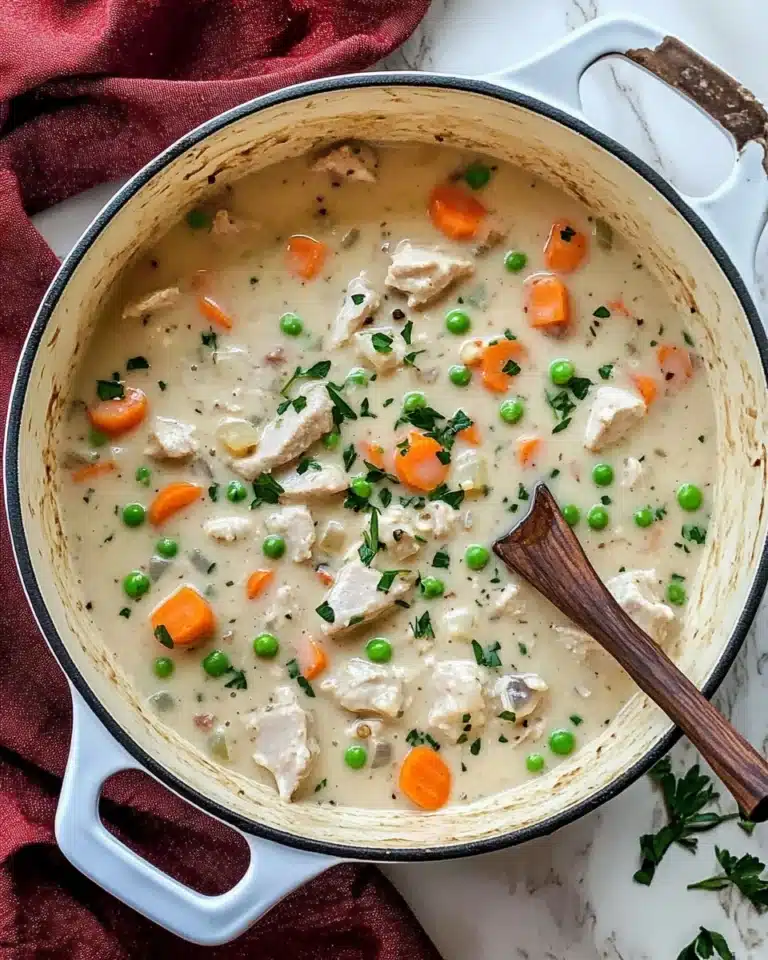Sage Butter Sauce is the kind of effortless magic that turns a simple meal into pure comfort food. With just a handful of ingredients and less than 15 minutes, this aromatic, nutty sauce fills your kitchen with cozy fragrance and instantly elevates pasta, chicken, or veggies—all with almost no effort.
Why You’ll Love This Recipe
- Incredibly Fast: You’ll have Sage Butter Sauce ready in just 15 minutes—perfect for busy weeknights or spontaneous dinner parties.
- Big Flavor, Minimal Ingredients: With only a few pantry staples, you get a sauce bursting with nutty butter and earthy sage—no fancy shopping trip required.
- Versatile Pairings: Elevate pasta, gnocchi, roasted veggies, chicken, or even fish—this sauce loves them all!
- Foolproof and Impressive: Even beginners can master this classic, yet it never fails to impress guests with its elegant simplicity.
Ingredients You’ll Need
What I adore about Sage Butter Sauce is how a few essential ingredients come together to create something restaurant-worthy. Each plays a vital role: lush butter for richness, sage for its earthy aroma, and the simplest seasonings to make everything sing.
- Butter (6 Tbsp, unsalted): Choose a good-quality unsalted butter—this is the foundation of the sauce, delivering creaminess and the signature nutty flavor when browned.
- Fresh Sage (4 Tbsp, or 4 tsp dried): Fresh sage brings a heady, herbal aroma and a beautiful pop of green; dried works in a pinch (see my tips below), but fresh is downright dreamy.
- Salt: Essential for brightening and balancing all the flavors; add to taste just before serving.
- Pepper: A quick grind of black pepper adds gentle warmth and depth.
- Garlic (1 clove, minced; optional): Adds a subtle, savory kick if you want to go a little bolder with your sauce.
Variations
Sage Butter Sauce is as flexible as it is delicious, so don’t be shy about putting your own spin on it! Whether you’re swapping herbs, tweaking for dietary needs, or just feeling creative, here are a few ideas to get you started.
- Brown Butter & Lemon: Add a splash of fresh lemon juice or zest for a bright, citrusy pop that balances the richness.
- Nutty Crunch: Toss in a handful of toasted pine nuts or walnuts for a restaurant-style crunch and extra flavor.
- Dairy-Free: Use a high-quality vegan butter to make this sauce completely plant-based—just watch carefully as it browns.
- Herb Swap: If you don’t have sage, try rosemary, thyme, or even fresh basil for a tasty twist.
- Garlic Lover’s: Sauté the garlic first until fragrant, then proceed with the rest, for even more savory depth.
How to Make Sage Butter Sauce
Step 1: Prep and Chop the Sage
Start by rinsing your sage leaves under cold water. Pat them gently dry, then remove the leaves from their woody stems (and don’t be tempted to skip this—no one wants tough stems in their sauce!). Stack the leaves, roll them up like a little cigar, and slice or chop them finely with a sharp knife. This helps the sage infuse the butter quickly and ensures even flavor in every bite.
Step 2: Melt and Brown the Butter
Slice the butter into pieces for even melting. Place in a medium skillet over medium heat—don’t rush this step! Watch as it melts and begins to foam, swirling or stirring gently. In 3 to 5 minutes, you’ll notice it turns golden brown and starts to smell nutty and caramelized. The moment you see those toasty brown bits and catch a whiff of that dreamy aroma, immediately remove the pan from the heat to avoid burning.
Step 3: Sizzle the Sage (and Garlic, if Using)
Add the chopped sage to your browned butter; it’ll sizzle up and release all its glorious fragrance! Stir constantly for 2 to 4 minutes so it crisps gently without burning. If you’d like, toss in minced garlic at this point for another layer of savory deliciousness. Keep stirring—this is when the sauce really comes alive.
Step 4: Season and Serve Right Away
Take the pan off the heat once the sage is crisped. Finish with salt and pepper to taste. Taste and adjust, then serve your Sage Butter Sauce immediately—drizzled over pasta, grilled chicken, fish, or veggies. It’s best enjoyed fresh while the butter is fragrant and the sage is crisp.
Pro Tips for Making Sage Butter Sauce
- Butter Browning Basics: Use a light-colored pan so you can watch the butter closely—once it goes from yellow to caramel, act quickly to avoid burnt bits!
- Fresh Sage Is Best: Fresh sage leaves not only look prettier but fry up crisp and fragrant—if using dried sage, add it after browning the butter and let it bloom in the fat for the best flavor.
- Don’t Walk Away: Sage Butter Sauce transforms fast—stay by the stove for the short burst of cooking for absolutely perfect, never-burnt results.
- Add Garlic Last: If using garlic, add it just as the sage goes in. Any sooner and it might burn, turning bitter instead of savory.
How to Serve Sage Butter Sauce
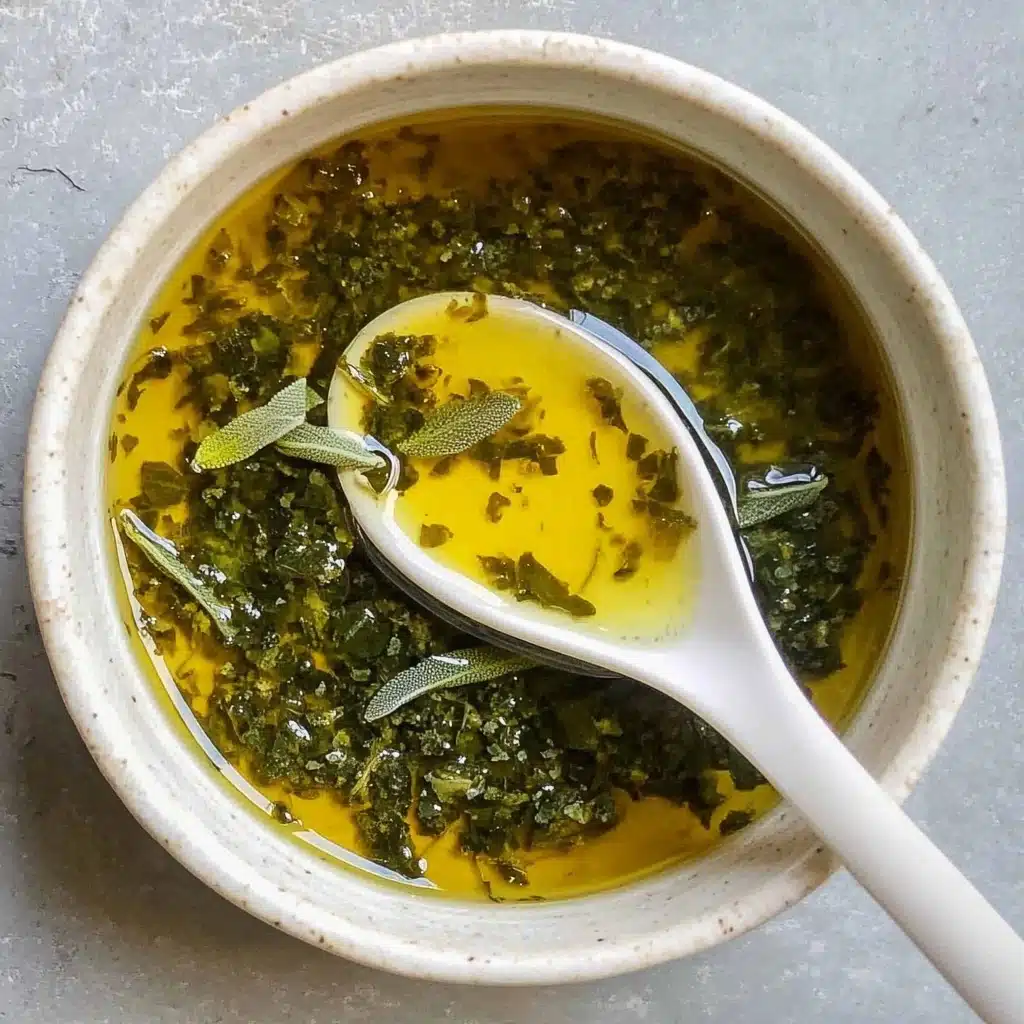
Garnishes
Give your Sage Butter Sauce an extra flourish with a sprinkle of flaky sea salt, an extra grind of black pepper, or a handful of crispy whole sage leaves right on top—those little details make each plate restaurant-worthy. A grating of Parmesan or Pecorino is never a bad idea either!
Side Dishes
This sauce loves carbs—think pillowy gnocchi, handmade pasta, or pillowy mashed potatoes. But don’t stop there; it’s incredible with roast butternut squash, steamed green beans, or sautéed mushrooms, and it absolutely shines drizzled over grilled chicken or fish.
Creative Ways to Present
Try serving Sage Butter Sauce in a shallow bowl with your cooked pasta twirled into little nests and topped with crisp sage leaves. For dinner parties, drizzle it over roasted vegetables as part of an elegant platter, or pour it into a small pitcher so guests can add as much as they like to their own plates. Presentation should feel as special as the flavor here!
Make Ahead and Storage
Storing Leftovers
If you have leftover Sage Butter Sauce (lucky you!), transfer it to a small airtight container as soon as it’s cooled. Keep it in the fridge for up to 4 days. Just know that the sage will soften with time, but the flavor stays gorgeous.
Freezing
Sage Butter Sauce actually freezes beautifully! Pour any extra into an ice cube tray to freeze in small amounts, then pop out a cube or two for future quick dinners. Just transfer the cubes to a zip-top bag once frozen—they’ll keep for about 2 months.
Reheating
Gently reheat Sage Butter Sauce over low heat in a small skillet, stirring often, just until melted and fragrant (don’t let it simmer, or the butter can separate). A dash of water or a tiny splash of fresh lemon can help bring the sauce back to life if it thickens too much in the fridge.
FAQs
-
Can I use dried sage instead of fresh?
Absolutely! Substitute 1 teaspoon dried sage for every tablespoon of fresh. When using dried sage, add it after browning the butter to let it release its flavor in the hot fat. While fresh sage gives the best flavor and texture, dried works nicely for everyday dinners.
-
How do I prevent the butter from burning?
Keep a close eye on the butter as it melts; use medium heat and a light-colored pan if possible, so you can watch the color change closely. As soon as the butter is golden brown and smells nutty, remove it from the heat—carryover cooking will take it the rest of the way.
-
What dishes pair best with Sage Butter Sauce?
This sauce is a dream with fresh pasta, gnocchi, ravioli, or tortellini, but don’t stop there! Try it with roasted squash, green beans, mashed potatoes, salmon, or grilled chicken—the herbaceous butter is a fantastic match for just about anything savory.
-
Can I make Sage Butter Sauce ahead of time?
While the sauce is best when made fresh, you can make it a day in advance and store in the fridge. Just reheat gently before serving, and consider adding a splash of lemon juice or water to freshen up the flavor and consistency.
Final Thoughts
I can’t think of a quicker or more comforting way to add restaurant-style flair to your home cooking than with this Sage Butter Sauce. Try it once, and I promise you’ll be dreaming up all kinds of ways to drizzle it on everything—enjoy every aromatic, buttery bite!
Print
Sage Butter Sauce Recipe
- Prep Time: 5 minutes
- Cook Time: 10 minutes
- Total Time: 15 minutes
- Yield: 4 servings
- Category: Stovetop
- Method: Stovetop
Description
A quick and flavorful sage butter sauce that complements a variety of dishes, from pasta to grilled chicken. This easy recipe combines the richness of butter with the earthy freshness of sage, creating a versatile sauce that can elevate any meal.
Ingredients
6 tbsp Butter, unsalted, cut into pieces
- 4 tbsp Sage, fresh or 4 tsp dried sage
- Salt
- Pepper
- 1 clove Garlic, minced (optional)
Instructions
- Clean and chop the sage leaves – Rinse the sage leaves under cold water, remove from stems, and finely chop.
- Melt the butter in a pan – Cut butter into slices, melt in a frying pan over medium heat until light brown.
- Add the sage to the pan – Stir in chopped sage, cook for additional minutes, season with salt, pepper, and garlic if using.
- Serve it immediately – Adjust seasonings as desired and serve over pasta, meat, or grilled dishes.
Notes
- To use dried herbs, substitute 1 tsp dried sage for every tbsp of fresh sage. Add dried sage with salt and pepper.
Nutrition
- Serving Size: 1g
- Calories: 158 kcal
- Sodium: 148 mg
- Fat: 17 g
- Saturated Fat: 11 g
- Unsaturated Fat: 6 g
- Carbohydrates: 1 g
- Cholesterol: 46 mg

